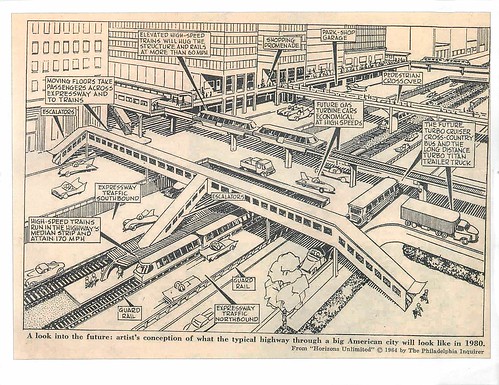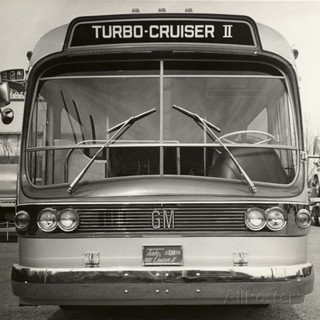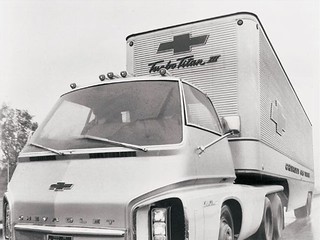A 1964 Future Transportation System - Monorails, High Speed Rail, Turbine Engine Cars,Buses and Trucks!
 |
| 1964 Futuristic Vision of Transportation Systems in 1980 |
A 1964 vision of what a typical highway running through an American City would look like in 1980. What really happened to this vision? CLICK HERE FOR LARGE SIZE OF ABOVE GRAPHIC
In 1964, the Philadelphia Enquirer posted a graphic of what a typical American city would look like in 1980 with a highway going through it. Looking at this graphic now in 2016, with the present state of our transportation systems and how our highways connect to our Canadian and USA cities, we see how badly we need a renewed vision for the future.
By 1964 the tearing up and elimination of the inner city streetcar systems was well underway, as the automotive and rubber tire manufacturers of the USA decided more room was needed for the cars they were building. Please watch this video “Taken for a Ride” for more information on this issue.
The massive highway building that started in the late 1950s and their continued expansion and reliance to this day has meant alternatives to intercity travel have been largely unsuccessful.
Let us have some fun and look and what the solutions were in 1964 and the realities are in 2016. The answer in 1964 evolved around technologies that were new/experimental and futuristic at the time. 273 km/h High Speed Trains, 96 km/h Monorails, and cars, buses and trucks powered by gas turbine engines were going to be of the solution to our transportation needs.
Gas Turbine Cars In North America
In the early 1950s General Motors (GM) had been developing a gas turbine engine. The demonstration vehicle was the GM Firebird XP-21. It was Chrysler corporation that led the way with the Turbine Car. It had model that had the first two prototypes travelling across the USA in 1956 and 1958.
From 1962-1964 it made 50 vehicles to be demonstrated by the public. Nine still exist today, including one owned by Jay Leno. Although the program stopped and started again it was dead by 1977.
Why did the gas turbine engine car by Chrysler not survive? It definitely had positive reviews from the public. A combination of: lack of funding from Chrysler, (Chrysler was in a tough financial situation), new government legislation regarding lower emissions and increased safety standards. The final nail in the coffin for the turbine engine car was during the Ronald Regan government era when the government cut off research funding to the project. An excellent video on the history of the Chrysler turbine car is available to watch here.
Gas Turbine Buses
As the graphic shows the Turbo Cruiser Cross Country Bus was going to be the future for bus transport. This idea was probably related also to the GM 1950s trials with turbine engine. Three different buses were outfitted with turbine engines and called the Turbo Cruiser, I, II and III. Although never driven in service for the public, the Cruisers were promoted by GM, including at the World’s Fair in New York City 1964.
In the last decade the use of small turbine engines to produce electricity that recharges the batteries in modern electric hybrid buses were being produced by Designline. Designline also made all electric powered buses and have several systems operating in the world.
The company was originally from New Zealand. Designline was bought by the Gossons family and a plant opened in Charlotte, North Carolina. The turbo engines were made by Capstone in California. In 2011 Designline filed for bankruptcy protection in 2013. The company Environmental Performance Vehicles (EVP) bought the assets. EVP website offers little in news about their products so the future of these electric/turbine hybrids buses is open to debate.
Long distance Turbo Titan Gas Turbine Trucks
This transportation idea also came from GM and their experimentation with the idea of turbine engines from the 50s with the above mentioned Firebird car and Turbo Cruiser bus. Only three prototype trucks were made in the early 1960s.
Fast forward to now and gas turbine/hybrid engine trucks are being built. These engines are being made by Wrightspeed out of California. But the Fulcrum™ (turbine) works only as an on-board generator, running at peak efficiency to charge the batteries. Courier giant Fed-Ex in 2014 has bought 25 of this new technology and are running a trial.
In 2014, Wallmart Inc. announced they were making an Advanced Vehicle Experience Concept Truck. They were partnering with a bunch of companies, to make and electrified hybrid turbine-powered trucks. Here is a video of the prototype. The future of turbine power playing a role in hybrid truck engines looks promising.
Elevated High Speed Trains Hug the Structure at 96 km/h
The graphic shows a vehicle straddling itself around a beam. This best represents a monorail. You could argue this also represents a Magnetic Levitation train but let us just talk about monorails for now.
Monorails were definitely looked at as a futuristic mode of transportation in the 1960s. In 1959 the Disney monorail opened, and by 1962 the Seattle monorail opened for the worlds fair. Both systems still operate today. The average speed is 60 km/h for the Disney World Monorail.
The growing dependence on highways and auto use made investment in new technologies like monorails difficult. Unfortunately monorails have been used for mainly amusement parks and to shuttle people short distances.
The potential for monorails in North America is far greater than the simple use patterns they are used for now. Bombardier, who has made a monorail for Las Vegas. In 2014 a 24 km INNOVIA Monorail 300 is being built in São Paulo, Brazil
High Speed Trains that Run on the Highway Median Strip at 273 km/h
The article does not mention turbo powered but it does not matter anyway. The inspiration for thinking that high speed trains would play an important role in intercity transport probably came from the 1964 introduction of the first Shinkansen high speed trains in Japan. Those trains went over 210 km/h.
High speed trains exist in many countries in the world with average speeds of 300 km/h.
The USA has the Amtrak Acela train which in sections of the route does go over 200 km/h. California and Texas are also states trying to move forward in implementing high speed rail.
In Canada, after 20 high speed rail studies, no high speed rail has gotten past the study stage. In fact the president of VIA RAIL, Yves Desjardins-Siciliano, has stated he does not want high speed rail.
Canada is an embarrassment in that it remains about 40 years behind other G8 countries in the passenger rail speeds that exist now or is planned for by VIA RAIL. Ironically in the 1970's Canada had a train that did go over 200 km/h. It was called the Turbo Train. Click here for a great video on the Turbo.
Between 2002 and 2004, Bombardier had promoted a Jet Train they had built, with a gas turbine engine. The JetTrain toured in different parts of Canada and the USA. Florida seemed to be interested in buying the JetTrain. There were active lobbing by opposing forces against high speed rail such as the aviation related or road and automobile related industries. Click here for a video of the JetTrain on a demonstration run.
It is interesting to view the graphic of a 1964 future transportation vision 52 years later. The reality is for some of these ideas, especially relating to the use of monorails and high speed trains in North America, we have tragically neglected these proven transportation systems.




Comments
Post a Comment